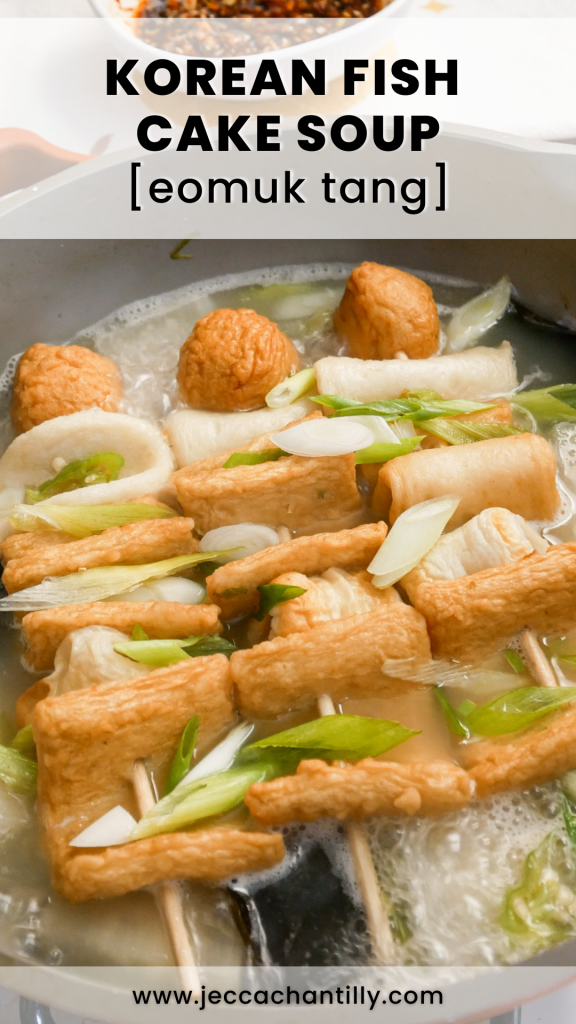Korean fish cake soup, also known as ‘odeng guk’ or ‘eomuk guk is a classic Korean street food made of fish cakes that are served skewered with a super delicious and comforting broth. You’ll find these everywhere in Korea at street food stalls or ‘pojang macha’. They’re usually served alongside tteokbokki or japchae dumplings as food to enjoy with ‘soju’ – Korea’s national liquor! This is a pic I snapped during my visit to Busan, Korea –


Luckily you don’t need to travel to Korea to try this because this recipe is very easy to recreate at home! 🙂
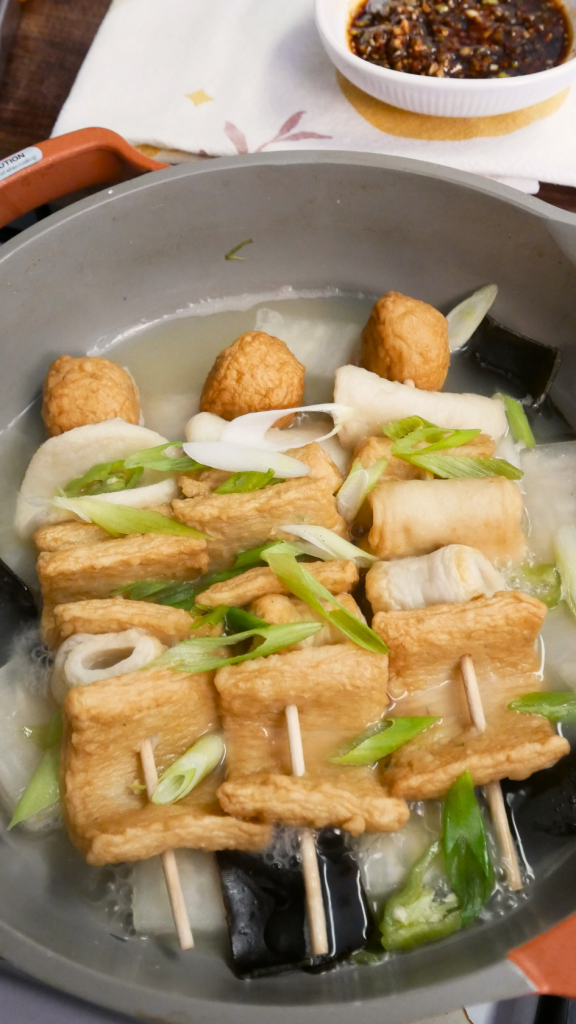
Why you’ll love this recipe
Tender, and chewy, that’s what a good fish cake should taste like. Paired with a simple but umami-packed anchovy broth, and you have a comforting meal to fill you right up. The broth is my favorite part – it’s light, refreshing, and a perfect way to wash down all the food.
This is completely optional, but I like to add some long green peppers to the soup to give it a bit of a kick. Korean radish is usually added to the soup for a touch of natural sweetness so I highly recommend using them. The dish only takes 30 minutes to make, so you can serve this as a cozy meal whenever you like. Don’t forget to serve it with the dipping sauce for a burst of extra flavor!
Korean Fish Cake Soup Ingredients & Substitutions
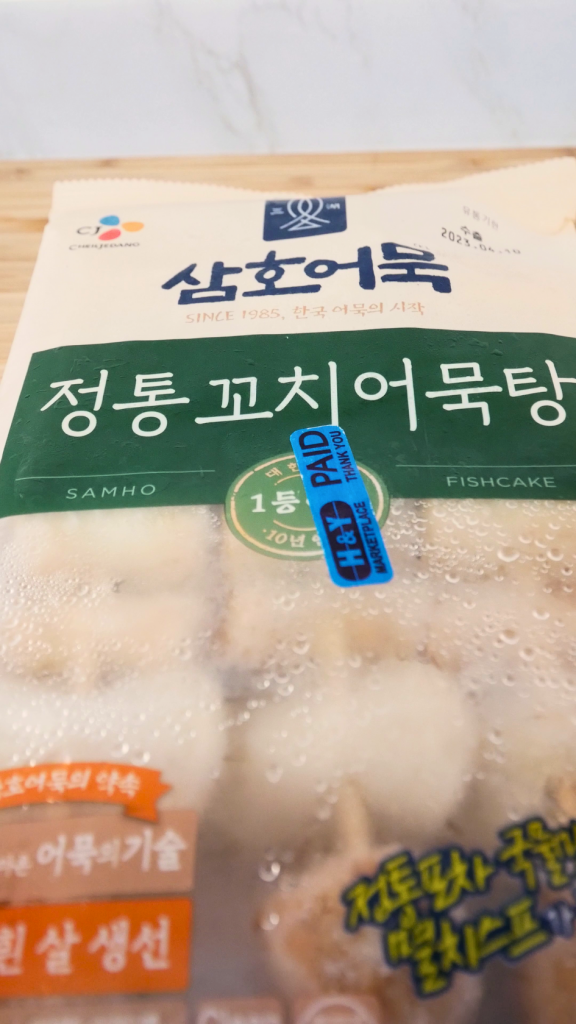
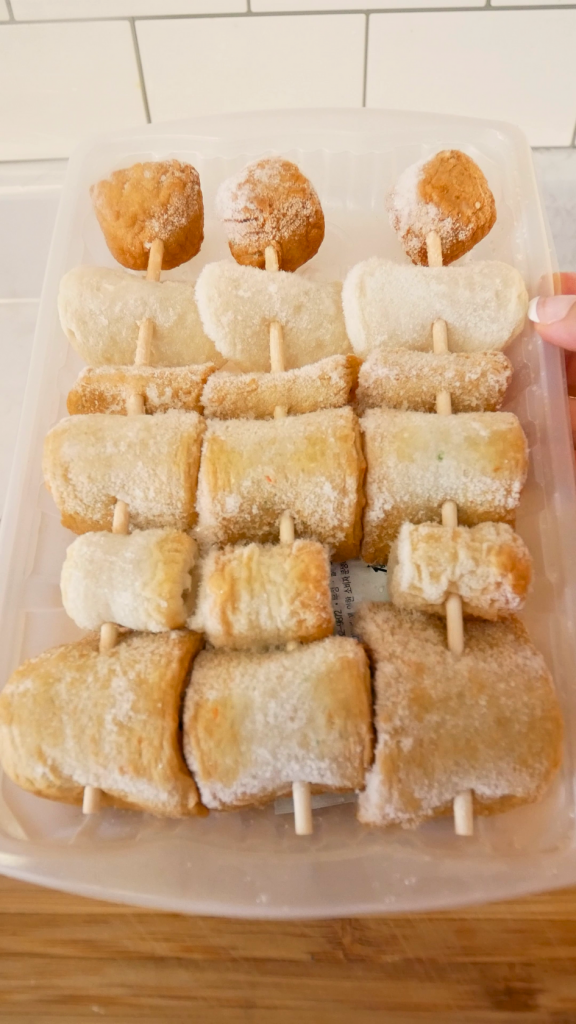
Fish cakes: fish cakes come in various shapes, sizes, and packages and can be found in the frozen section of your local Korean or Asian market. The fish cakes are traditionally served in skewers so you can purchase ones that are already skewered or you can skewer them yourself.
Scallions: scallions add freshness as a garnish for the soup and dipping sauce.
Long green peppers: long green peppers will add a mild spiciness to the soup and dipping sauce, but you can also replace them with any pepper you like, including poblano or jalapeno peppers.
Broth Ingredients & Substitutions
Dried anchovies: dried anchovies add a salty and umami flavor to the broth, but in a pinch, you can also add fish sauce to taste or make my Anchovy Powder recipe in advance so you’d always have some on hand.
Dried kelp: dried kelp adds a deep umami flavor to the broth. You can substitute it with nori or shiitake mushrooms but it won’t quite taste the same. I personally enjoy eating the kelp so I like to leave it into the broth however you can remove it if you’d like.
Onion: onion is added to deepen the flavors of the broth. It also adds a hint of natural sweetness.
Cabbage: cabbage adds a subtle sweetness to the broth, but you can replace it with more onion
Korean radish: when cooked down and softened, Korean radish turns into a smooth and sweet taste which deliciously complements the dish. This is the only ingredient that is not strained from the broth. Korean radish is usually only found in Korean markets and can be substituted with daikon radish, which is available in Asian markets.
Salt: salt is used to season the broth while keeping the broth light in color.
Chicken bouillon: chicken bouillon is great for seasoning the broth, but you can also use MSG or more salt. Just be sure to taste and adjust. My mom always adds chicken bouillon and I think it tastes the best with it added.
Dipping Sauce Ingredients & Substitutions
Soy sauce: fish cake soup is usually served with a side of dipping sauce with soy sauce as the base of the sauce. I usually use Sempio Soy Sauce Jin S but any soy sauce would do.
Sugar: sugar helps balance out the savoriness and saltiness in the sauce.
Gochugaru: gochugaru is added to build the spiciness of the dipping sauce. It’s relatively mild in spice however, feel free to adjust based on your spice level preferences.
Garlic: garlic adds a deliciously garlicky taste and aroma to the sauce.
Scallion: scallions add freshness to the sauce.
Long green pepper: similar to the gochugaru, the long green pepper adds spiciness to the sauce.
Sesame oil: sesame oil adds a nutty and rich taste to the dipping sauce.
Sesame seeds: sesame seeds amplify the sesame flavor in the sauce and also add texture.
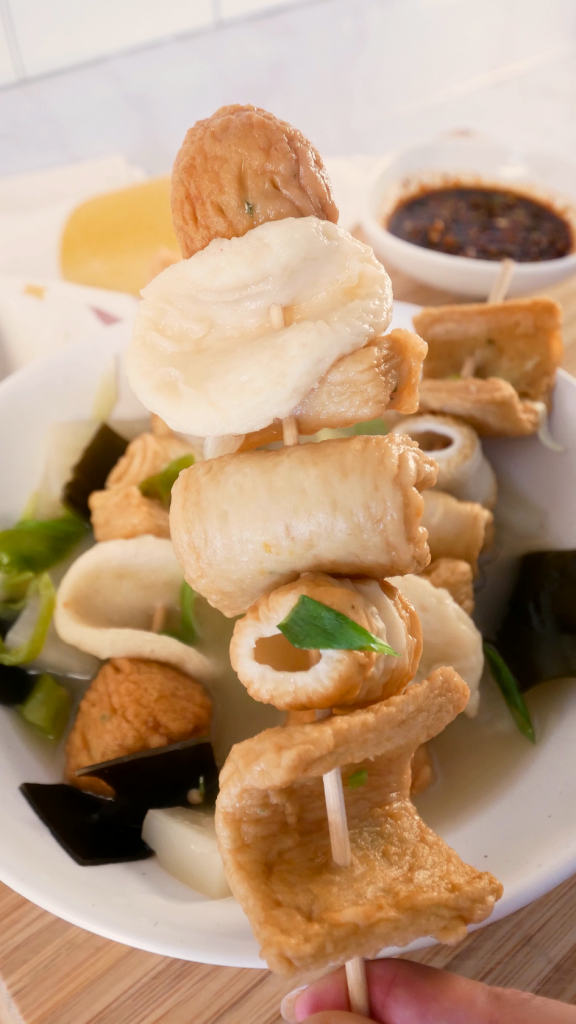
How do I prepare Korean Fish Cake Soup?
To prepare this delicious street food at home, just follow the steps below:
Step 1: Prepare the broth
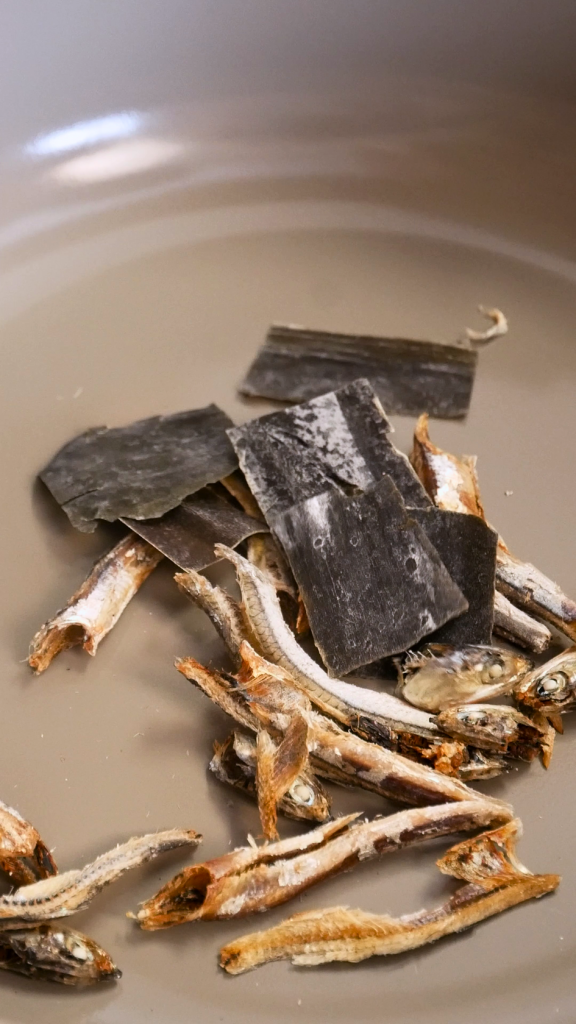
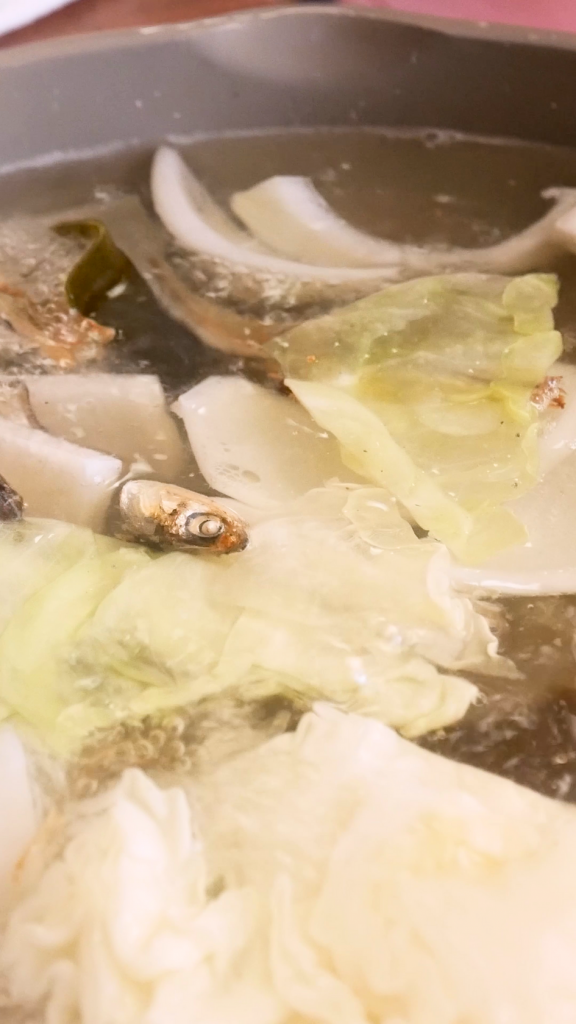
To start, combine dried anchovies, dried kelp, onion, cabbage, Korean radish, and water. Bring the mixture to a boil over medium heat and cook for 20-30 minutes.
Step 2: Remove the ingredients & season broth
Once the broth reduces by half, remove everything except for the radish and kelp (optional). At this point, season the broth with salt and chicken bouillon or MSG.
Step 3: Cook the fish cakes
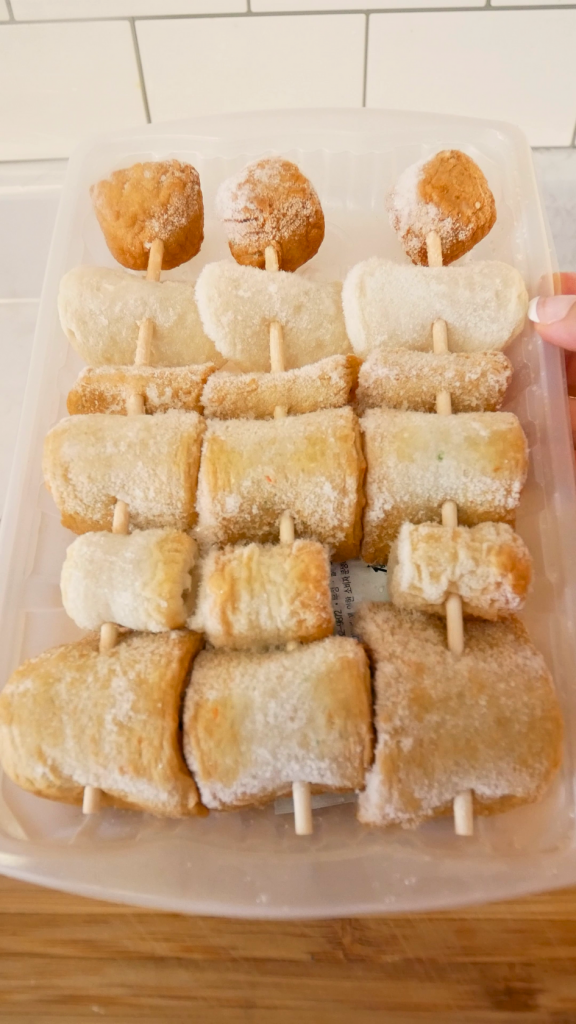
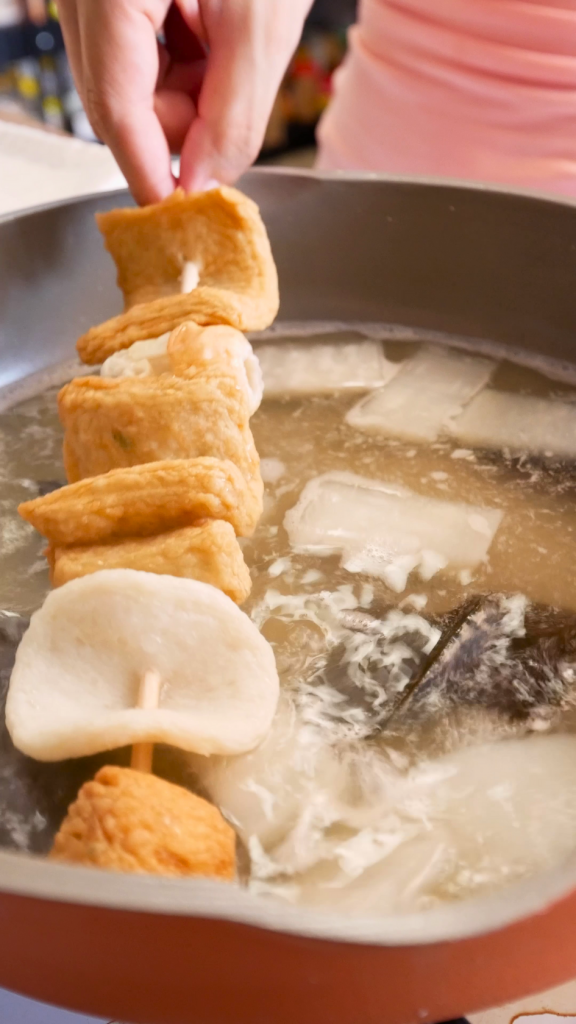
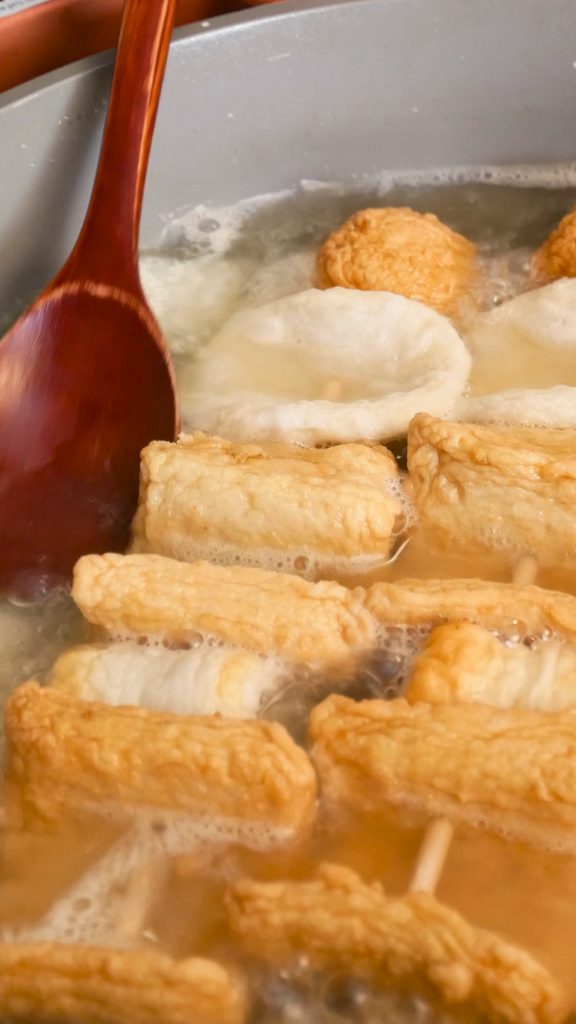
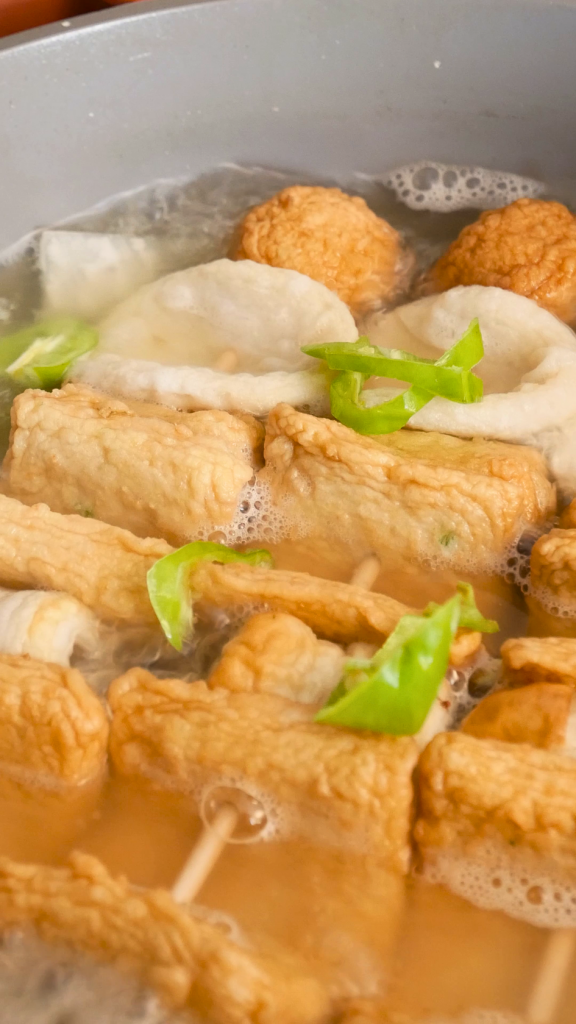
Add the fish cakes and let them cook for 5 to 6 minutes. Once the fish cakes are done, garnish the broth with scallions and peppers.
Step 4: Make the dipping sauce
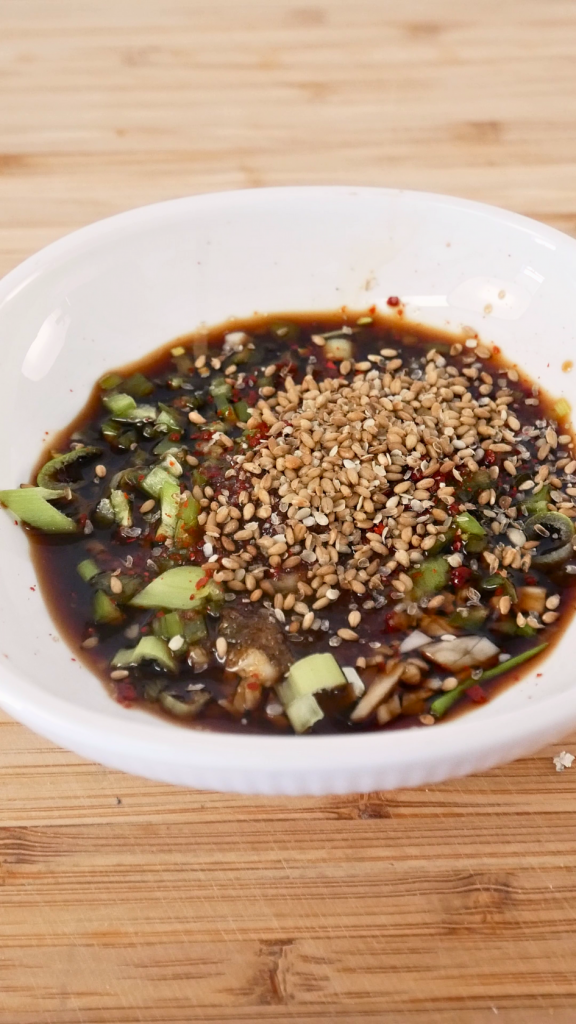
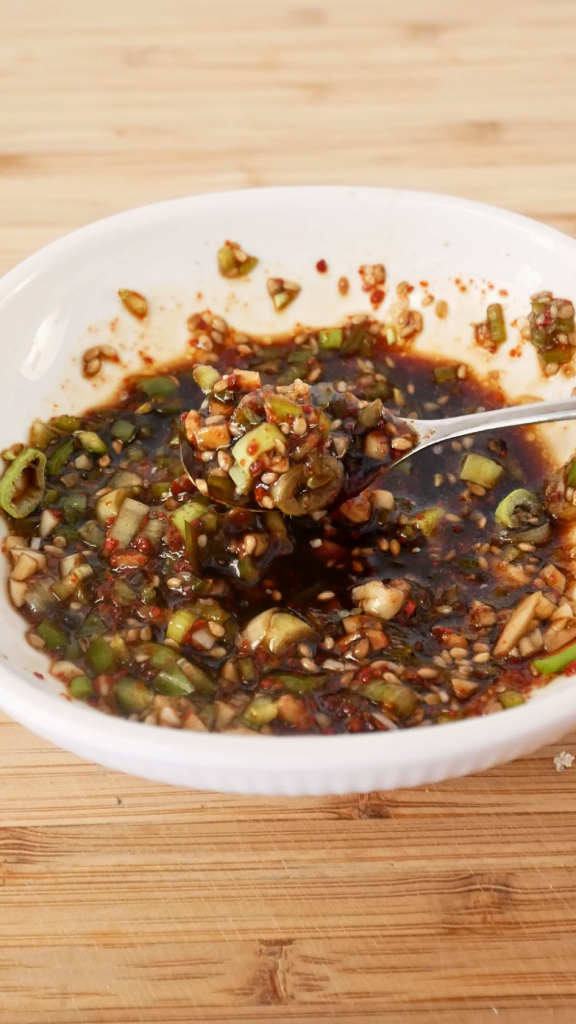
Combine garlic, scallions, peppers, soy sauce, sesame oil, gochugaru, sugar, and sesame seeds in a small bowl. Stir to mix them well.
Step 5: Serve!
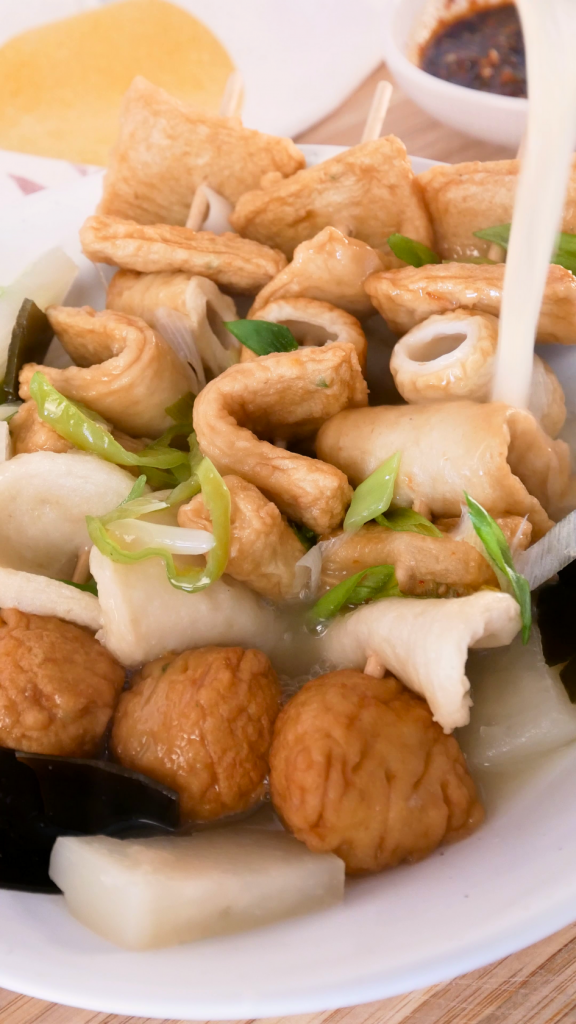

Serve the fish cake soup with the dipping sauce, and enjoy while they’re hot!
Cooking Tips for Korean Fish Cake Soup
Korean fish cake soup is relatively easy to prepare however here are some tips to keep in mind to make the most delicious dish every time:
- Since the fish cakes are the star of the dish, be sure to use good quality Korean fish cakes for this recipe. They come in various shapes, sizes, and packages and can be found in the frozen section of your local Korean or Asian market. The fish cakes are traditionally served in skewers so you can purchase ones that are already skewered or you can skewer them yourself.
- Before preparing the broth, make sure to remove the innards of the dried anchovies. The innards have a bitter taste, which can be bitter and unpleasant. To remove the innards, split the body of the anchovies in half. Remove the innards (it’ll look black) and that’s it!
- Feel free to adjust the amount of long green peppers and gochugaru in the soup and dipping sauce based on your spice level preference.
- The broth can be made 2 days in advance and stored in the refrigerator. It can also be stored in the freezer for a month. If freezing, be sure to strain the broth completely, including the radish. I find that the radish gets very mushy when reheated.
Frequently Asked Questions
What are fish cakes made of?
Fish cakes consist of ground white fish paste or meat and wheat flour. Depending on the brand, they can also contain onion, carrots, salt, sugar, and MSG for flavor. Lower-quality brands may contain more starch fillers than fish meat, so make sure to get one with fish paste or meat as the primary ingredient.
You can find fish cakes at Korean or Asian grocery stores. I like to use the assorted ones for this soup, but you can also get whatever’s available. Fish cakes can last for months in the freezer so it’s good to stock up on them if you want to make this recipe regularly!
What is Korean radish?
Korean radish or ‘mu‘ is a variety of radish native to Korea. You can recognize it with its short plump oval shape with curved ends. Korean radish has a white base that sometimes transitions into a light green hue at the top. A good radish should be firm and have smooth and shiny skin with a dense and crisp interior. Korean radish is a traditional ingredient in Korean fish cake soup but can also be substituted with daikon radish.
How do you remove the innards of dried anchovies?
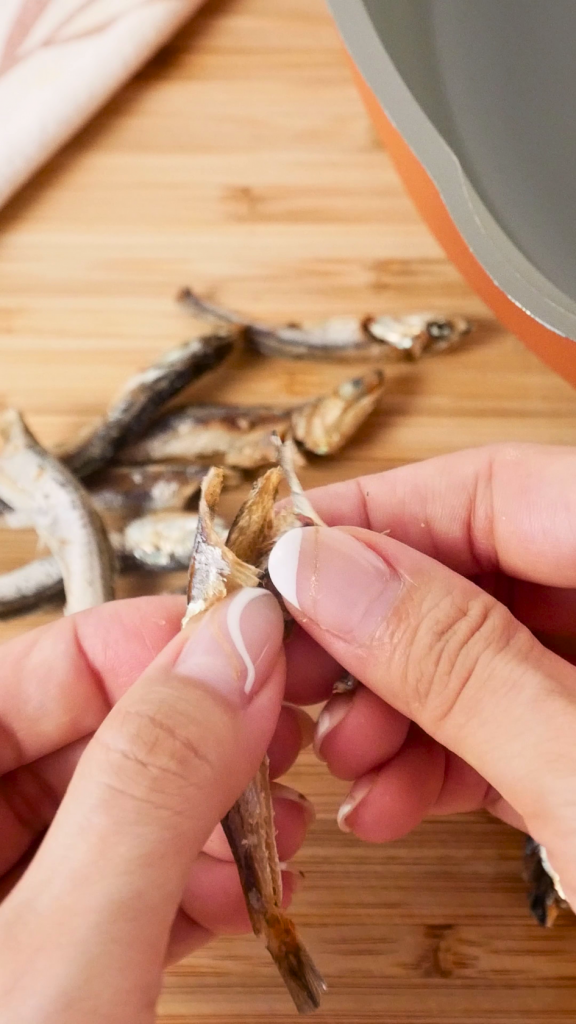
For best results, I highly recommend removing the innards of dried anchovies before you start making the anchovy broth. To do this, use your fingers to open the belly of the anchovy slowly. Then scrape out the innards, making sure to leave the head attached. Repeat the steps on the rest of the anchovies. If you’re still unsure how to do this, you can also watch the video below to take a peek at how I do it.
Can you store Korean Fish Cake Soup?
You can store any leftover Korean fish cake soup in the fridge. Just keep it in an airtight container and it’ll stay last for up to 3 days. If you like, you can also store any leftover dipping sauce in a separate container. To reheat, just let the soup boil over the stovetop or pop it in the microwave until it’s heated through.
Looking for more easy and delicious soup recipes?
1. Korean Pork Bone Soup – also known as ‘gamja tang‘! if there’s one dish I’d have for the rest of my life, this would be the one. It’s made of fall-off-the-bone pork, potatoes, assorted vegetables served in a flavorful spicy soup.
2. Korean Rice Cake Soup – this New Year’s Day staple is a must at home for welcoming good luck and prosperity for the upcoming year or simply to enjoy any time throughout the year. This is a simplified version of the traditional recipe and it’s just as delicious. It’s made of perfectly cooked brisket and rice cake combined with a comforting soup.
3. Cabbage Soybean Paste Soup – for a comforting soup that’s easy to prepare, you must try this recipe. It’s made with anchovy broth and cabbage, and enhanced with the flavors of Korean soybean paste.
4. Korean Mussel Soup – this mussel soup is light, spicy, and refreshing. This broth is mussels forward, allowing the flavors of the mussel to shine. Perfect as a side or main with toasted bread.
5. Char Siu Pork Noodle Soup – this hearty soup is a Cantonese classic favorite. Served with juicy char siu pork and flat wide noodles in a simple yet satisfying homemade broth.
6. Spicy Seafood Noodle Soup – If you love mussels, this thick and hearty recipe will be the perfect soup to warm you right up. It’s spicy, comforting, and perfect for seafood lovers!
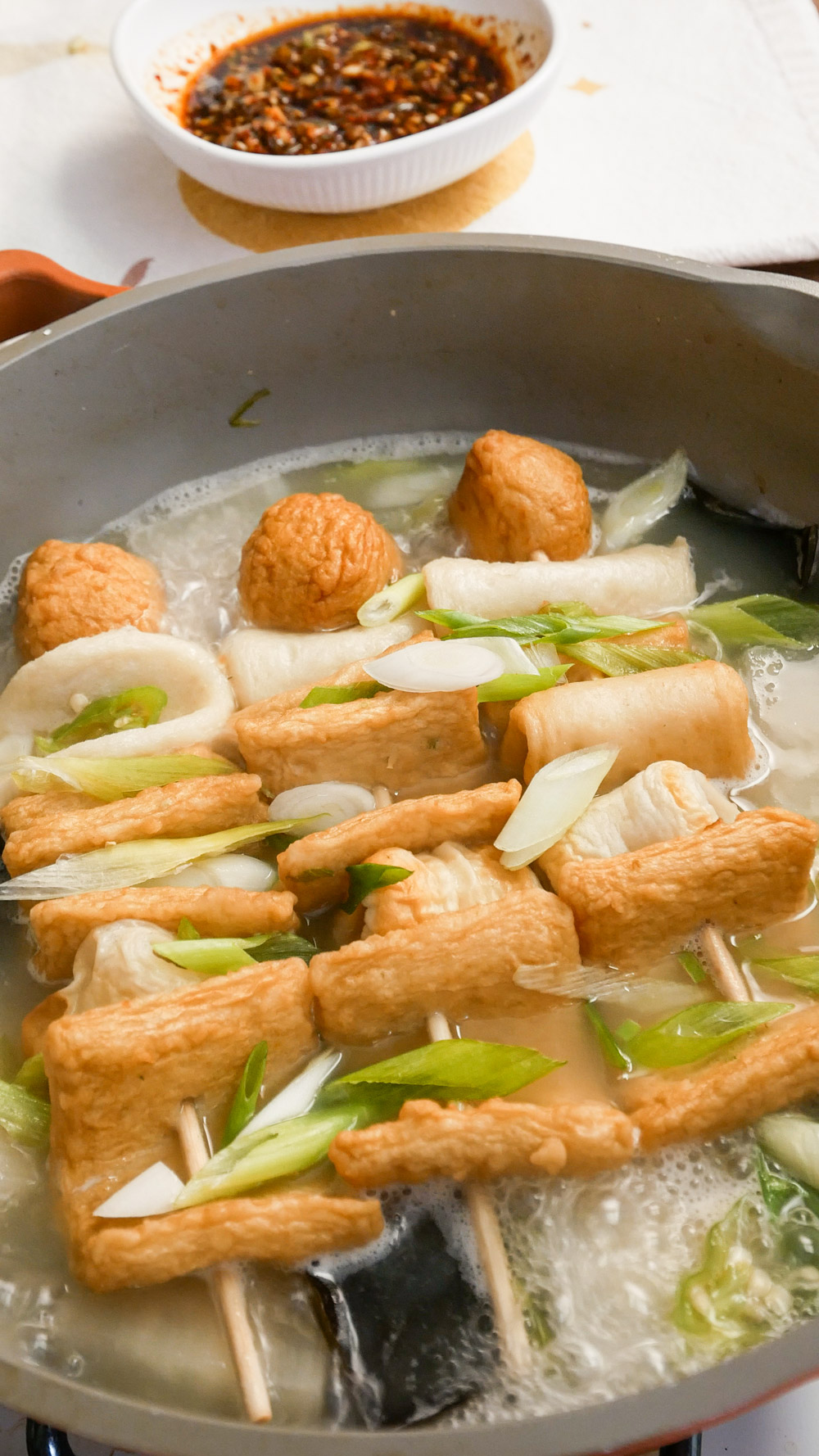
Odeng/Eomuk Guk
Ingredients
- 12 oz fish cakes assorted
- 1-2 scallions chopped
- 1 tbsp sliced long green peppers optional
Broth
- 6 cups water
- 12 dried anchovies innards removed
- 2 oz dried kelp
- 1/4 medium onion
- 3 oz cabbage
- 3 oz Korean radish sliced into chunks
- 1 tsp salt adjust to taste
- 1/2 tsp chicken bouillon or MSG, optional
Dipping Sauce
- 2 tbsp soy sauce
- 1 tsp sugar
- 1 tsp gochugaru Korean red pepper flakes
- 1 tsp garlic minced
- 1 tsp scallion chopped
- 1 tsp long green pepper chopped
- 1/2 tsp sesame oil
- 1 tsp sesame seeds
Instructions
- Start by preparing the broth. Combine dried anchovies, dried kelp, onion, cabbage, Korean radish and water. Bring to boil over medium heat and cook for 20-30 minutes.
- Once the broth has been reduced by half, remove everything except for the radish and kelp (optional). Season the broth with salt and chicken bouillon or MSG.
- Add the fish cakes and cook for 5-6 minutes. Garnish with scallions and peppers (optional).
- Serve and enjoy with dipping sauce!
Dipping Sauce
- Combine garlic, scallions, peppers, soy sauce, sesame oil, gochugaru, sugar, sesame seeds. Stir together to mix well.
Pin & save this recipe for later!
